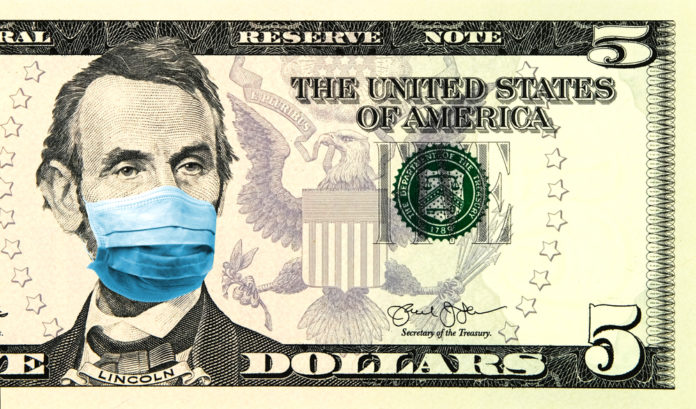By
On April 7, 2020, the Small Business Administration (SBA) issued additional guidance on the Paycheck Protection Program (PPP) in the form of answers to frequently asked questions about the PPP. According to the new guidance, actions taken by lenders or borrowers that conform to the guidance, the SBA’s Interim Final Rule, and any subsequent rules, will not be challenged by the U.S. government. However, because the guidance “does not carry the force and effect of law,” businesses should be cautious of over-reliance on this declaration. This update summarizes some of the most important information in the guidance related to borrower eligibility, “affiliation” issues and the calculation of payroll costs. Additional information on the PPP has been summarized in a recent blog.
Clarification of Eligibility Requirements
- Applicants with more than 500 employees are eligible borrowers under the PPP if they meet the definition of a “small business concern” under the employee-based or revenue-based size standards set by the SBA. Applicants may also qualify for a PPP loan under the “alternative size standard” test, which requires that an applicant have a maximum tangible net worth of no more than $15 million and average net income after federal income taxes of no more than $5 million for two full fiscal years preceding the date of application.
- Certain entities other than small business concerns are eligible for loans. Applicants must have 500 or fewer employees who principally reside in the United States or must meet the SBA employee-based size standards for the industry in which an applicant operates. These rules equally apply to 501(c)(3) non-profit organizations, 501(c)(19) veterans’ organizations, and SBA designated tribal business concerns.
Application of Affiliation Rules
- Applicants must apply the “affiliation” rules discussed in the SBA’s Interim Final Rule on Affiliation and must certify eligibility on the loan application. Lenders may rely on an applicant’s certification of its affiliation status without further inquiry.
- Importantly, the new guidance indicates that if a minority shareholder irrevocably waives or relinquishes existing rights to control the business or block action by the board of directors or shareholders then the minority shareholder is no longer an affiliate of the business (assuming no other relationship that triggers the affiliation rules).
Eligibility and Payroll Calculations for Seasonal Businesses
- Seasonal businesses that were not in operation on February 15, 2020, may still be eligible if the businesses were in operation for an eight-week period between February 15, 2019, and June 30, 2019.
- Seasonal businesses may determine average monthly payroll costs using data from February 15, 2019, or March 1, 2019, and June 30, 2019. If the applicant was not in business during this time, then average monthly payroll costs between January 1, 2020, through February 29, 2020, may be used.
Employee Numbers Calculation
- For the purposes of applying an employee-based size standard, applicants may use the SBA’s calculation of the average number of employees per pay period in the 12 completed calendar months prior to the date of the loan application “or from calendar year 2019.” If a business has been operational for less than 12 months, then all months the business has operated should be used for this calculation. (For seasonal businesses, applicants may use the periods described above in calculating the average).
Calculating Payroll Costs
- Applicants, not lenders, are responsible for accurately calculating payroll costs and determining the applicability of the SBA’s affiliation rules. While lenders must “perform a good faith review, in a reasonable time,” the “level of diligence by a lender should be informed by the quality of supporting documents supplied by the [applicant].” If errors are identified in an applicant’s payroll costs calculation, the guidance states that the lender should work with the applicant to fix the error. That said, to minizine risk and delay, applicants should ensure in the first instance that submitted payroll information is complete and accurate.
- Payroll costs can be calculated using aggregate payroll costs from either the previous 12 months or from calendar year 2019 (see above for seasonal businesses).
- When calculating payroll costs, the exclusion of an employee salary that is greater than $100,000 annually applies only to cash compensation and not to non-cash benefits such as contributions to retirement or defined-benefit plans, payments for group healthcare coverage, including insurance premiums, or state and local taxes.
- Employee vacation, parental, family, medical and sick leave are all included in payroll costs. But qualified sick and family leave wages for which a credit is allowed under the CARES Act are not included.
- Borrowers that utilize third-party payroll providers or Professional Employer Organizations (PEOs) can rely on payroll documentation provided by these providers if the documents indicate the amount of wages and payroll taxes reported to the IRS.
Finally, applicants who have already submitted, and lenders that have already approved, a loan application based on the SBA’s April 2, 2020, Interim Final Rule do not need to take any further action based on this updated guidance. Applicants may, however, revise applications based on clarifications provided in the guidance if an application has not yet been processed.
Once an applicant’s loan is approved, a lender must make a first disbursement of loan funds no later than ten days after the loan approval date. Thereafter, loan forgiveness eligibility is determined based on a borrower’s payroll costs during an eight-week period that begins to run on the date of the first loan disbursement.
The SBA will continue to update this guidance with answers to other frequently asked questions. Bradley will monitor the SBA’s updates along with other developments related to the PPP or CARES Act.
Reprinted with permission. Originally published by Bradley Arant Boult Cummings LLP. Copyright 2019.




